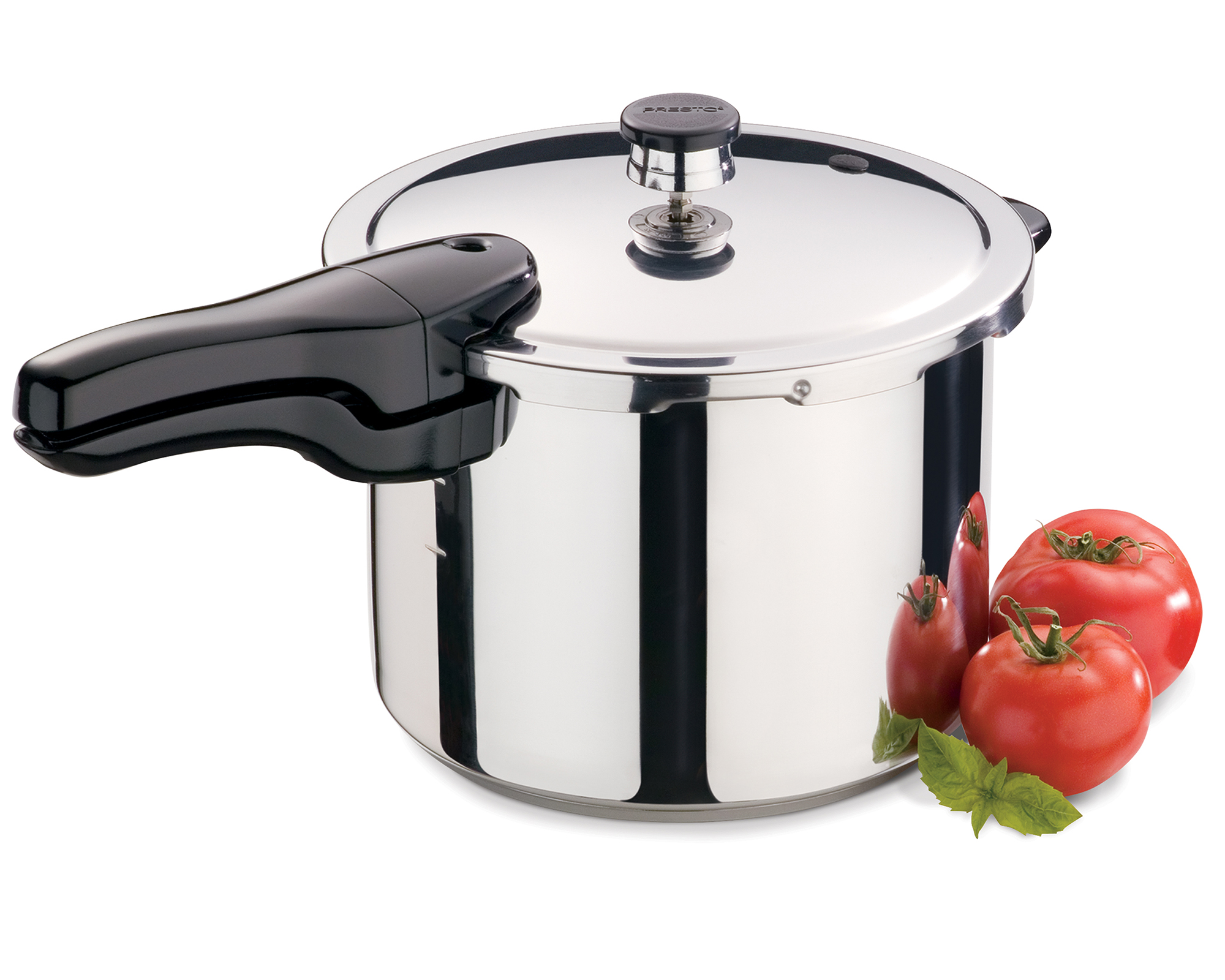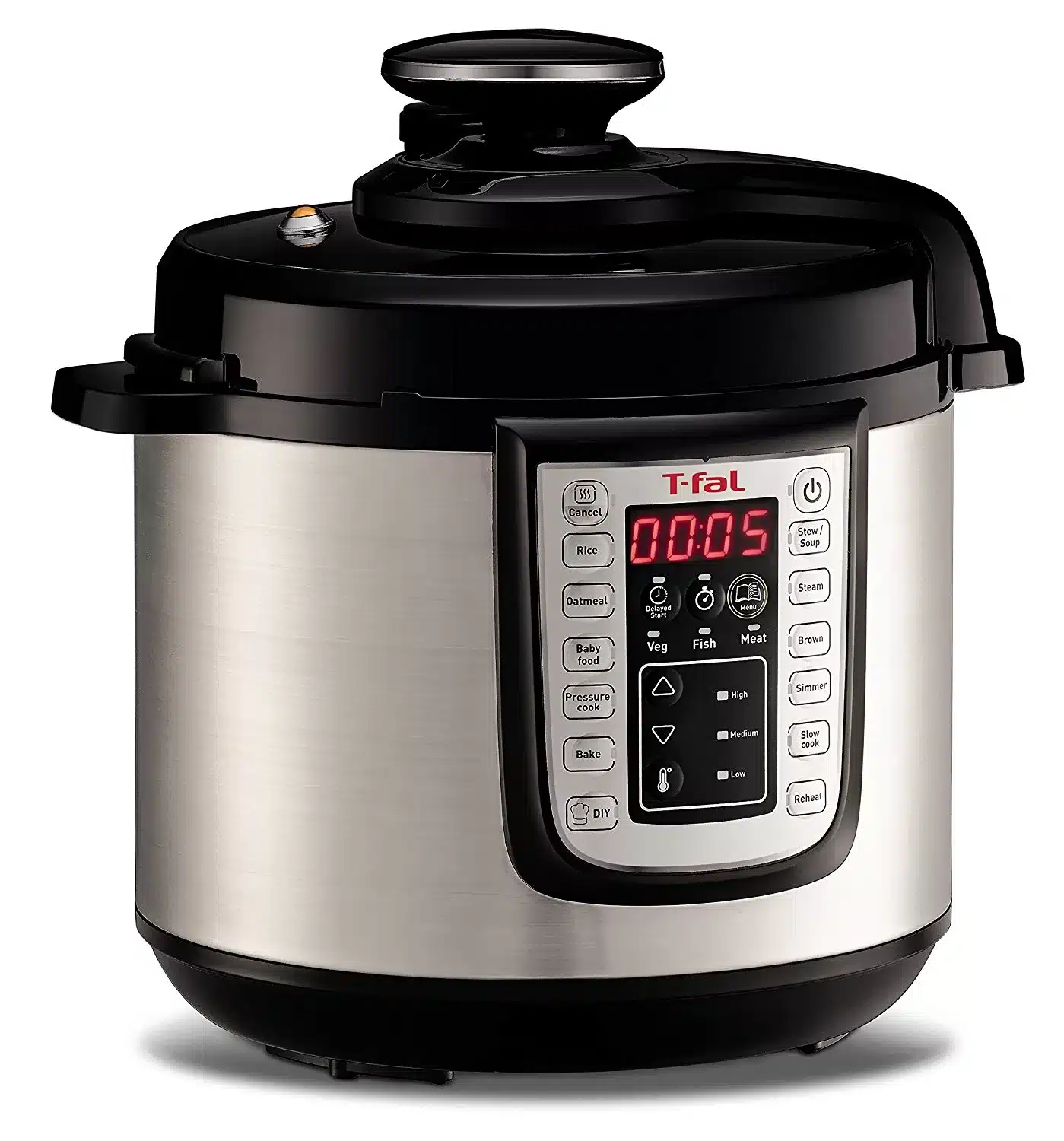Lets face it, pressure cookers can (and are) a lifesaver for everyone, from busy families to single pot households. There is however one critical flaw – When a pressure cooker gets blocked, or just won’t build up pressure – A fairly important aspect of pressure cooking hey! Throughout my many years of dealing with industrial and for home pressure cookers, I have dealt with more blocked pressure cookers than I care to remember, trying to ruin the days cooking (or even worse! Service!)
However, there is no need to fear – this handy dandy guide will talk you through fixing both Electric AND Stovetop Pressure cookers. So hang tight and lets get you up and cooking again!
How to Fix an Electric Pressure Cooker That Won’t Build Up Pressure
An electric pressure cooker is a smart device that has a built-in heating element and a digital control panel. It can automatically adjust the temperature and pressure according to the program you select. It also has safety features that prevent it from overheating or exploding.
However, even an electric pressure cooker can malfunction sometimes and fail to build up pressure. Some of the most common causes of an electric pressure cooker not building up pressure are:
- A faulty or damaged gasket. The gasket is the rubber ring that seals the lid to the pot. If it is cracked, torn, warped, or dirty, it will not create a tight seal and steam will leak out.
- A misaligned or loose lid. The lid needs to be properly aligned and locked in place before you start cooking. If it is crooked or not secured, steam will escape from the gaps.
- A clogged or dirty valve. The valve is the part that regulates the pressure inside the pot. It releases excess steam when the pressure gets too high. If it is clogged with food particles or debris, it will not function properly and steam will leak out.
- A lack of liquid or too much liquid in the pot. The liquid is essential for creating steam and pressure in the pot. If there is not enough liquid, there will not be enough steam and the pressure will not rise. If there is too much liquid, it will take longer for the steam to build up and the pressure to rise.
Here are some steps you can follow to fix an electric pressure cooker that won’t build up pressure:
- Turn off the power and release any remaining pressure in the pot according to your manufacturer’s instructions. Wait for the pot to cool down completely before opening the lid.
- Check the gasket for any signs of damage or wear and tear. If it is cracked, torn, warped, or dirty, replace it with a new one or clean it with warm water and soap. Make sure it fits snugly around the rim of the lid.
- Check the lid for any signs of misalignment or looseness. Make sure it is properly aligned and locked in place before you start cooking. You can also apply some cooking oil around the rim of the lid to help create a better seal.
- Check the valve for any signs of clogging or dirtiness. If it is clogged with food particles or debris, clean it with a toothpick or a small brush. You can also soak it in vinegar or lemon juice for a few minutes to dissolve any deposits.
- Check the liquid level in the pot for any signs of lack or excess. Add more liquid if there is not enough or remove some liquid if there is too much. Follow your recipe instructions for the correct amount and type of liquid for your dish.
How to Fix a Stove Top Pressure Cooker That Won’t Build Up Pressure

A stove top pressure cooker is a simple device that has a metal pot and a metal lid with a handle and a valve. It does not have any electronic components or settings. You need to place it on a heat source such as a gas or electric stove and adjust the heat manually.
These bad boys can also malfunction sometimes and fail to build up pressure. Some of the most common causes of a stove top pressure cooker not building up pressure are:
- A faulty or damaged gasket. The gasket is the rubber ring that seals the lid to the pot. If it is cracked, torn, warped, or dirty, it will not create a tight seal and steam will leak out.
- A misaligned or loose lid. The lid needs to be properly aligned and locked in place before you start cooking. If it is crooked or not secured, steam will escape from the gaps.
- A clogged or dirty valve. The valve is the part that regulates the pressure inside the pot. It releases excess steam when the pressure gets too high. If it is clogged with food particles or debris, it will not function properly and steam will leak out.
- A low or high heat source. The heat source needs to be adjusted according to the type and size of your pressure cooker and the recipe you are following. If the heat is too low, it will take too long for the steam to build up and the pressure to rise. If the heat is too high, it will cause too much steam to escape and the pressure to drop.
- A lack of liquid or too much liquid in the pot. The liquid is essential for creating steam and pressure in the pot. If there is not enough liquid, there will not be enough steam and the pressure will not rise. If there is too much liquid, it will take longer for the steam to build up and the pressure to rise.
Here are some steps you can follow to fix a stove top pressure cooker that won’t build up pressure:
- Turn off the heat source and release any remaining pressure in the pot according to your manufacturer’s instructions. Wait for the pot to cool down completely before opening the lid.
- Check the gasket for any signs of damage or wear and tear. If it is cracked, torn, warped, or dirty, replace it with a new one or clean it with warm water and soap. Make sure it fits snugly around the rim of the lid.
- Check the lid for any signs of misalignment or looseness. Make sure it is properly aligned and locked in place before you start cooking. You can also apply some cooking oil around the rim of the lid to help create a better seal.
- Check the valve for any signs of clogging or dirtiness. If it is clogged with food particles or debris, clean it with a toothpick or a small brush. You can also soak it in vinegar or lemon juice for a few minutes to dissolve any deposits.
- Check the heat source for any signs of low or high temperature. Adjust the heat according to your type and size of pressure cooker and your recipe instructions. You can also use a thermometer to measure the temperature of your heat source.
- Check the liquid level in the pot for any signs of lack or excess. Add more liquid if there is not enough or remove some liquid if there is too much. Follow your recipe instructions for the correct amount and type of liquid for your dish.
How to Prevent Your Pressure Cooker from Not Building Up Pressure
To avoid having this problem again in the future, here are some tips on how to prevent your pressure cooker from not building up pressure:
- Always use fresh and good quality gaskets that are compatible with your model of pressure cooker. Replace them regularly according to your manufacturer’s recommendations.
- Always clean your pressure cooker thoroughly after each use and store it in a dry place. Remove any food particles or debris from the pot, lid, gasket, valve, and other parts.
- Always follow your recipe instructions carefully and use the correct amount and type of liquid for your dish. Do not overfill or underfill your pot with liquid or food.
- Always check your pressure cooker for any signs of damage or wear and tear before using it. If you notice any cracks, dents, leaks, or rusts, do not use it and contact your manufacturer for repairs or replacements.
FAQs
Here are some frequently asked questions about pressure cookers that won’t build up pressure:
Q: How do I know if my pressure cooker is building up pressure?
A: You can tell if your pressure cooker is building up pressure by looking at the valve on top of
the lid. Depending on your model of pressure cooker, the valve might have a pin, a button, a dial, or a weight that indicates the pressure level. When the valve rises or moves, it means that the pressure is building up. When the valve drops or stops, it means that the pressure is released.
Q: How long does it take for a pressure cooker to build up pressure?
A: The time it takes for a pressure cooker to build up pressure depends on several factors, such as the type and size of your pressure cooker, the amount and type of liquid and food in the pot, and the heat source you are using. Generally, it can take anywhere from 5 to 20 minutes for a pressure cooker to build up pressure.
Q: What do I do if my pressure cooker is overpressurized?
A: If your pressure cooker is overpressurized, it means that there is too much steam and pressure inside the pot and it can be dangerous. You should turn off the heat source immediately and release the pressure in a safe manner according to your manufacturer’s instructions. Do not try to open the lid or force the valve until all the pressure is gone.
Q: Can I use any type of liquid in my pressure cooker?
A: No, you should not use any type of liquid in your pressure cooker. You should only use liquids that can produce steam and pressure, such as water, broth, juice, wine, or beer. You should avoid using liquids that are too thick or creamy, such as milk, cream, or coconut milk. These liquids can scorch or foam and clog the valve or cause uneven cooking.
Q: How do I clean my pressure cooker?
A: You should clean your pressure cooker after each use and store it in a dry place. You should wash the pot, lid, gasket, valve, and other parts with warm water and soap and rinse them well. You can also use vinegar or lemon juice to remove any stains or odors. You should dry all the parts thoroughly and reassemble them before storing them.
Conclusion
We hope this blog post has helped you understand why your pressure cooker might not be building up pressure and how to fix it. Pressure cooking is a great way to save time and energy and make delicious meals. But like any other appliance, it can have some issues sometimes. By following our tips and tricks, you can prevent and solve these issues and enjoy your pressure cooking experience.
If you have any questions or comments about this topic, feel free to leave them below. We would love to hear from you. And if you liked this blog post, please share it with your friends and family who might find it useful.


